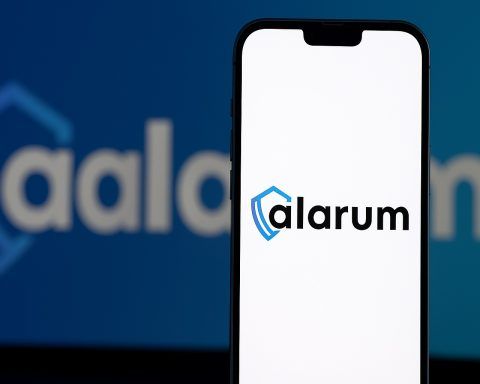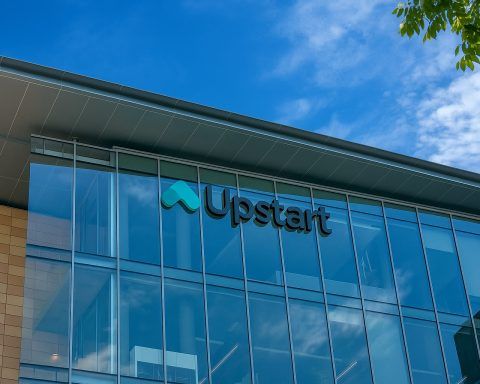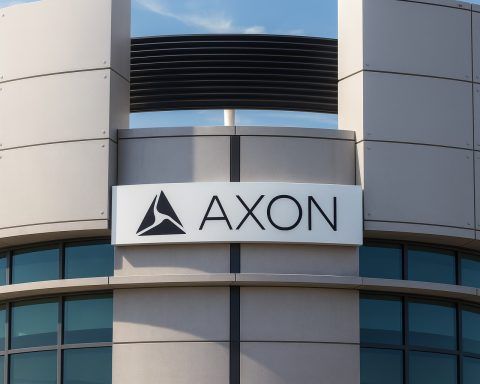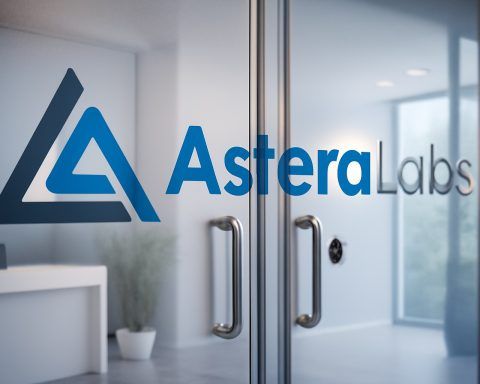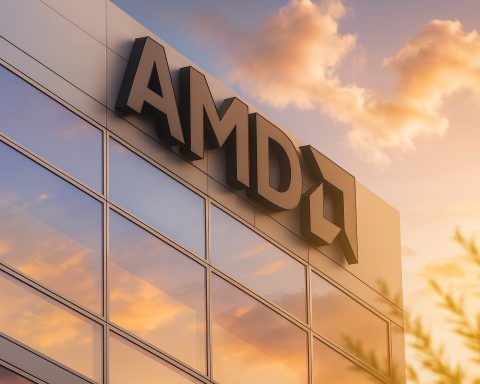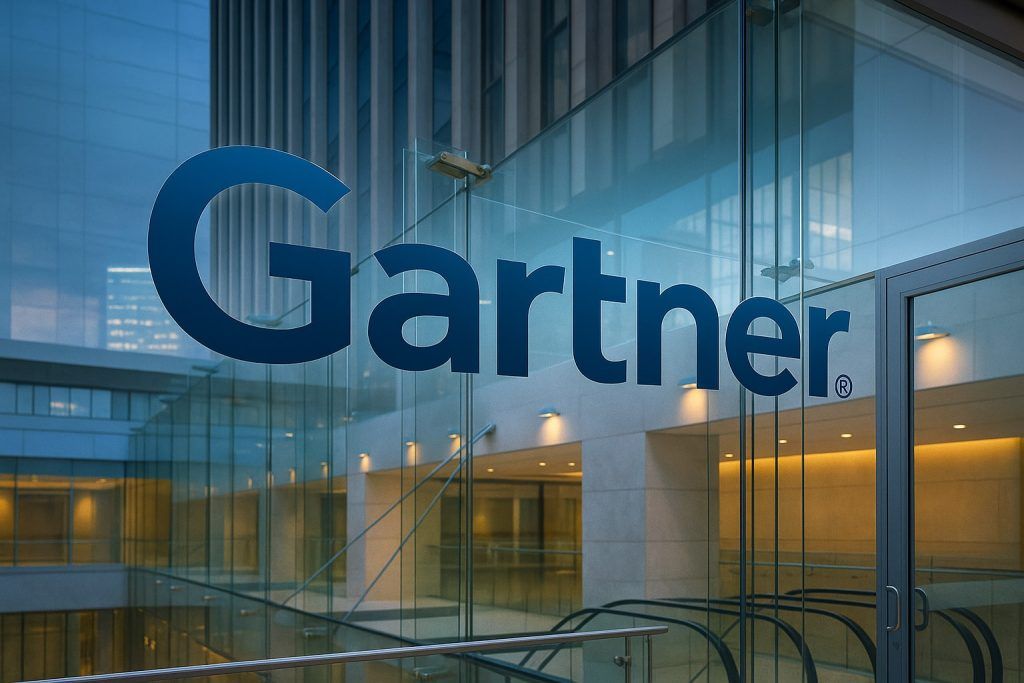- Current Price: ~$86 per share (November 4 close), up ~5% after Q3 earnings; Year-to-date gain ~17–22% [1]. Market cap stands around $2.6 billion [2]. Shares are roughly +235% over five years but about -20% in the past year amid a semiconductor downturn [3].
- Q3 2025 Earnings: Revenue $213.6 million (beat estimates of ~$204 million) [4]; Non-GAAP EPS $1.21 (vs ~$1.02 expected) [5]. GAAP EPS was $0.83 [6]. Results, though down from last year’s boom (Q3 2024 revenue $256.6 M, EPS $1.49) [7] [8], exceeded guidance and forecasts, lifting the stock.
- Guidance: Axcelis projects Q4 2025 revenue of ~$215 million and GAAP EPS ~$0.76 [9], suggesting steady performance as the industry “digests” a cyclical slowdown. Analysts expect full-year 2025 revenue ~$800 million (∼22% YoY decline) [10] [11] before a rebound in 2026.
- Major News: In October, Axcelis announced an all-stock merger with Veeco Instruments (VECO) to create a larger semiconductor equipment player. The combined enterprise value is ~$4.4 billion [12], making it the 4th-largest U.S. wafer-fab equipment supplier [13]. Axcelis shareholders will own ~58% of the merged company [14].
- Analyst Sentiment: Wall Street’s consensus is cautiously optimistic. The stock has a Hold/Buy borderline rating (3 Buys, 5 Holds, 1 Sell) with an average 12-month price target around $97 (≈17% upside) [15] [16]. Recent actions include Benchmark upgrading ACLS to Buy with a $105 target [17] and BofA downgrading to Underperform with a $90 target [18]. Valuation is moderate at ~20× forward P/E [19], below peers, but PEG ~2.3 is slightly above industry average [20].
Stock Price and Performance History
Axcelis stock traded in the mid-$80s in early November 2025, rallying on earnings news. It closed around $86.24 on Nov 4, 2025, up about 5% for the day and roughly 8–9% over the two sessions surrounding its earnings report. This rebound comes after a soft October where ACLS had slid ~14% over a month [21], underperforming the tech sector. Even after the post-earnings pop, shares remain well below their 52-week high of ~$103 and about double the 52-week low near $40 [22], reflecting both the stock’s volatility and longer-term growth.
Overall, year-to-date 2025 returns are around +17–22% for ACLS [23], outpacing many broader market benchmarks despite recent weakness. However, on a one-year basis the stock is down roughly 20% [24], as it gave back some of 2023’s huge gains. Long-term investors have still seen impressive growth – Axcelis stock is up ~235% over five years [25] – thanks to the company’s niche strength and previous semiconductor up-cycle. The stock’s beta is about 1.75 [26], indicating higher volatility than the market. Notably, institutional ownership is very high (~90% of float) [27], signaling strong interest from funds and potentially contributing to volatility as sentiment shifts.
Historical context: Axcelis surged in 2021–2022 amid a semiconductor equipment boom (driven by chip shortages and expansion capex), and its revenue surpassed $1 billion in 2024. But as the chip industry entered a cyclical downturn in 2025, demand for fabrication tools cooled. Axcelis’s share price peaked in mid-2024 and has since pulled back with the cycle. Nevertheless, the company’s focus on power and specialty semiconductor markets (like silicon carbide) provided some resilience. Even in a down-cycle, Axcelis remained profitable and far outpaced its pre-2020 stock levels. The recent bounce suggests investors are starting to price in a bottoming of the cycle and were encouraged by the latest results.
Latest News: Q3 2025 Earnings Beat & Developments
Earnings Highlights: Axcelis reported its Q3 2025 results on Nov 4, and the numbers were better than anticipated. Revenue came in at $213.6 million, exceeding consensus estimates (~$204 M) by about 5%, and non-GAAP EPS was $1.21, topping estimates (~$1.02) by ~18% [28]. (See table below.) This beat on both top and bottom lines was achieved despite a year-over-year decline from the record levels of Q3 2024 (when revenue was $256.6 M). It indicates Axcelis is managing the slowdown better than expected:
| Q3 2025 Results | Actual | Consensus Est. | Surprise |
|---|---|---|---|
| Revenue | $213.6 million [29] | ~$204.1 million [30] | +4.6% |
| Non-GAAP Earnings per Share (EPS) | $1.21 [31] | ~$1.02 [32] | +18% |
Profitability: Axcelis maintained robust margins. Gross margin was about 41.6% (GAAP) [33], only slightly below last year’s 42–43% level, showing pricing power and cost discipline. GAAP operating margin was 11.7% [34] (vs ~18% a year ago), and on a non-GAAP basis ~18.2% [35]. Net income for Q3 was $26.0 M (GAAP), down from $48.6 M in the prior-year quarter [36] [37]. While earnings fell year-on-year due to lower sales, the decline was anticipated – Wall Street had projected about a 32% EPS drop [38] – and Axcelis in fact beat those expectations. The company credited strength in its aftermarket business and silicon carbide (SiC) equipment demand for offsetting broader softness [39].
Axcelis’s management was pleased with the quarter. CEO Russell Low noted, “We delivered another solid quarter, with sales and earnings both exceeding our expectations. We are also pleased to report record [customer service & aftermarket] revenue… enabling us to successfully navigate the anticipated cyclical digestion period across our markets in 2025.” [40] This suggests that even as overall semiconductor capital spending slowed in 2025, Axcelis found pockets of strength (e.g. servicing installed tools and selling into EV-related chip fabs). The company’s Purion ion implanters continued to see demand from power chip manufacturers, and Axcelis kept expenses in check. CFO Jamie Coogan highlighted that Axcelis “generated robust operating leverage… translating into strong free cash flow. With over $590 million in cash and investments on the balance sheet, Axcelis has ample flexibility to capitalize on our strategic initiatives.” [41] In other words, the company is bolstering its cash war chest (now almost $600 M, with minimal debt) to invest in growth opportunities.
Guidance and Outlook: For the current Q4 2025, Axcelis provided guidance that is roughly flat sequentially: expected revenue ~$215 M and GAAP EPS ~$0.76 [42]. This outlook implies full-year 2025 revenue around $800 M (vs $1.02 B in 2024) and confirms that the cyclical trough is near. Notably, the guidance is above prior analyst consensus for Q4 (~$203–205 M rev) [43], indicating management’s confidence that demand is stabilizing. The earnings call and press release did not detail full-year 2026 guidance (and the Veeco merger adds uncertainty), but analysts currently forecast a solid rebound next year – roughly $4.00 EPS in 2026 vs ~$3.00 in 2025 [44], which would be ~33% earnings growth as chip industry investment picks up again.
Beyond the numbers, Axcelis also made a strategic announcement recently that could reshape its future: an impending merger with Veeco Instruments.
Merger with Veeco: Building a Bigger Semiconductor Equipment Player
On October 1, 2025, Axcelis and Veeco Instruments (another U.S. semiconductor equipment firm) announced a definitive agreement to combine in an all-stock merger. This is a transformational deal for Axcelis. The combined company will have an estimated enterprise value of ~$4.4 billion (based on late-September prices) [45], and Axcelis shareholders will own about 58% of the new entity (Veeco’s shareholders 42%) [46]. Once merged, Axcelis + Veeco becomes the fourth-largest U.S. wafer fabrication equipment supplier by revenue [47] – behind giants like Applied Materials, Lam Research, and KLA – significantly elevating Axcelis’s scale and industry position.
Rationale: The merger broadens Axcelis’s product portfolio beyond ion implantation into Veeco’s areas of expertise. Veeco brings technologies in ion beam deposition, laser annealing, advanced packaging equipment, and MOCVD (metal-organic chemical vapor deposition) for LEDs and power/RF devices [48]. Axcelis, of course, is a leader in ion implant and curing systems. Together they will offer a more diversified suite of fab tools spanning front-end and packaging steps. This combination aims to “capitalize on powerful secular tailwinds including AI and electrification”, according to CEO Russell Low [49]. By uniting complementary technologies, the firms expect to target larger end markets (e.g. compound semiconductors for EVs, advanced chips for AI) and leverage greater R&D scale.
The CEOs of both companies emphasized the strategic fit. Axcelis’s Low called the deal “a transformational milestone… establishing a new leader in semiconductor capital equipment with complementary technologies, a diversified portfolio and an expanded addressable market” [50]. He noted having personal experience at Veeco and “long admired [its] history of innovation” [51]. Veeco’s CEO Bill Miller added that “this merger capitalizes on the core competencies of both companies… increased R&D scale will accelerate our ability to solve material challenges [and] enable advanced chip manufacturing” [52]. In short, the merger is about building a stronger competitor that can better serve customers and innovate across a wider range of semiconductor production steps.
Market Reaction: Initially, investor response to the Axcelis–Veeco deal was mixed. Axcelis’s stock dipped in early October, possibly due to typical merger arbitrage (all-stock deals can pressure the acquirer’s shares in the short term) and uncertainty about integration. By late October, ACLS was down ~10%+ for the month [53] even as the tech sector rose. However, analysts generally see strategic merit in the combination. Benchmark Co. upgraded Axcelis to Buy on Oct 2 (the day after the announcement) and raised their price target to $105, citing the enhanced growth prospects of the combined company [54]. The merger is expected to close in 2026, pending approvals, and Axcelis will enter its “next chapter of growth” with much greater resources. Management stated, “By bringing our two companies together, we believe we are building a leading semiconductor equipment company with the capabilities, resources and financial foundation to drive sustainable growth and value creation for shareholders.” [55]
For now, Axcelis continues to operate independently, but investors should watch for integration plans, cost synergy targets, and how the two product lines will be aligned. The deal underscores Axcelis’s ambition to move beyond its niche and compete on a larger stage.
Company Overview: Niche Leader in Ion Implantation Systems
Axcelis Technologies is a U.S.-based semiconductor equipment manufacturer specializing in ion implantation systems used in chip fabrication [56]. In the semiconductor manufacturing process, ion implanters are critical tools that “dope” silicon wafers with impurities (ions) to modify their electrical properties. This is an essential step in creating transistors and integrated circuits. Axcelis’s flagship product line, the Purion platform, includes high-current, medium-current, and high-energy implanters tailored to various chip types. These machines are known for delivering precise dose and energy control with high purity and throughput [57]. Axcelis also provides equipment for related steps like curing (thermal processes after implant) and extensive aftermarket services (spares, upgrades, maintenance) which form a stable revenue stream.
Founded in 1995 (spun off from Eaton Corporation’s semiconductor equipment division in 2000), Axcelis built a strong reputation in the implant segment. It has a global installed base of tools at leading chipmakers, and its technology is especially prominent in specialty semiconductor markets. For example, Axcelis has become the dominant supplier of ion implant tools for power electronics and wide-bandgap semiconductors (like silicon carbide and gallium nitride devices used in electric vehicles, 5G, and renewable energy). According to analysts, Axcelis enjoys an estimated 70–80% market share in the ion implantation equipment for SiC/GaN (“wide-bandgap”) manufacturing [58]. This niche leadership has been a major growth driver in recent years, as companies like Wolfspeed, Onsemi, and Infineon have invested heavily in SiC power chip fabs – and they rely on Axcelis’s Purion Power Series implanters for those production lines.
Meanwhile, in the broader ion implant market (for mainstream silicon chips), Axcelis faces competition from larger firms. Applied Materials (AMAT) acquired Varian Semiconductor in 2011 and holds significant share (historically ~50–60%) in implant tools for high-volume logic and memory fabs [59]. Japanese players (e.g. Nissin Ion Equipment) also compete in certain segments. Nonetheless, Axcelis has carved out a profitable space by focusing on technology innovation and on markets where its expertise gives an edge. The Purion platform’s high beam currents, energy range, and purity have enabled Axcelis to win business in the advanced analog, power and sensor chip sectors [60]. A recent example is the Purion Power Series+ implanters launched in September 2025, designed specifically for next-gen SiC power devices (enhancing performance and yields for EV chips) [61]. This continual product development helps Axcelis stay ahead in its specialty domain.
In summary, Axcelis is viewed as a “best-of-breed” ion implant specialist. The company’s equipment is an enabling technology for every chip that gets made [62], and it competes by offering superior precision and cost-of-ownership in that segment. Axcelis’s focus also means a relatively concentrated product line compared to diversified competitors – which can lead to volatility (as implant demand ebbs and flows with chip cycles) but also allows the firm to devote R&D to remain at the cutting edge of implant technology. Post-merger with Veeco, Axcelis will broaden its scope to other equipment segments, but ion implantation will likely remain a core strength and differentiator.
Financial & Fundamental Analysis
Despite the cyclical downturn in 2025, Axcelis’s financial health remains solid. The company is profitable, generates free cash flow, and carries very little debt. Key fundamental metrics and recent trends include:
- Revenue and Growth: Axcelis’s revenue exploded from around $420 M in 2019 to over $920 M in 2022 [63], as semiconductor capital spending boomed. It likely exceeded $1 billion in 2024 (benefiting from strong SiC equipment orders). In 2025, revenue is contracting (expected ~$788–803 M for full-year [64] [65]) by ~22% YoY, reflecting the industry pullback. However, this decline is milder than some peers in the wafer-fab equipment (WFE) space, thanks to Axcelis’s exposure to resilient segments (automotive, industrial chips). Analysts anticipate a return to growth in 2026, potentially back to or above 2024 revenue levels, assuming memory/logic spending recovers and EV-related demand stays strong.
- Profitability: Axcelis enjoys healthy margins for a capital equipment firm. During the peak in 2022–23, gross margins were in the low-to-mid 40% range and operating margins around 20%. In the latest quarter (Q3’25), gross margin was 41.6% [66] and non-GAAP operating margin 18.2% [67] – only a slight drop from a year prior, which speaks to cost control and pricing discipline even at lower volume. Net margin in the first half of 2025 was around ~16–18% [68]. Axcelis also boasts a solid Return on Equity (ROE) near 16% in recent quarters [69]. These figures are strong for a mid-cap industrial company, indicating that Axcelis’s niche focus yields above-average profitability when demand is robust. Even as profits dipped in 2025, the company avoided losses (unlike some smaller semi tool makers in downturns).
- Balance Sheet:Axcelis has minimal debt and a large cash reserve, giving it a fortress-like balance sheet. As of Q3 2025, debt-to-equity was a mere 0.04 [70] (essentially debt-free), while cash and investments exceeded $590 M [71]. The current ratio is around 6.0 and quick ratio 4.3 [72], indicating ample liquidity. This financial strength not only provides safety in a downturn but also resources for R&D, strategic deals (like the Veeco merger), and potential share buybacks or acquisitions. Axcelis’s working capital needs are modest relative to its cash on hand, so it’s in a net cash position. The merger with Veeco is all-stock, so it will preserve this cash buffer going forward. Overall, financial leverage is low, and the company can navigate industry cycles without financing stress.
- Cash Flow: Axcelis converts a good portion of its earnings into free cash flow (FCF). Lower revenue in 2025 means FCF is down from record levels, but the company still generated positive FCF year-to-date, according to management. In Q3, operating cash flow benefited from the profitable aftermarket business and disciplined spending. With few capital expenditures needed beyond R&D and demo tools, Axcelis’s free cash flow margin tends to be healthy in up-cycles (teens percent of revenue). This helps fund internal investments and builds the cash stockpile.
- Shareholder returns: Axcelis does not pay a dividend (opting to reinvest in growth), and its share count has remained fairly stable, with only minor dilution from stock compensation. The stock’s appreciation has been the main source of shareholder return. Management hasn’t signaled any share repurchases recently, likely preferring to use cash for strategic growth (e.g., the Veeco deal, which expands the business rather than shrinking the float).
In summary, Axcelis’s fundamentals present a picture of a well-managed company that rode the semiconductor boom to strengthen its finances. It entered the 2025 slowdown with a lean cost structure and strong balance sheet, allowing it to remain solidly profitable while peers with heavier debt or broader exposure to memory chips struggled. The company’s high gross margins underscore its technological moat in ion implant – customers are willing to pay premium prices for Purion systems – and management has kept operating expenses in check relative to revenue. As the cycle turns upward, Axcelis is positioned to ramp earnings quickly without needing outside capital.
Competitive Landscape and Peers
Axcelis operates in the global semiconductor equipment industry, which is dominated by a few very large players. Its primary competitors and peers include Applied Materials (AMAT), Lam Research (LRCX), KLA Corp (KLAC), and several Japanese firms (e.g. Tokyo Electron, Hitachi High-Tech) depending on the segment. However, Axcelis’s business is far more focused: it essentially competes in the implantation niche, whereas those larger companies have broad portfolios (deposition, etch, lithography, inspection, etc.). Here’s how Axcelis compares and fits into the landscape:
- Scale: The contrast is significant – Applied Materials has a market cap around $175–180 B and annual revenue ~$25 B+, while Lam Research is ~$200 B market cap with ~$19 B revenue [73] [74]. Axcelis, by comparison, is a ~$2.5–3 B company with ~$0.8–1 B revenue. Post-merger, Axcelis+Veeco combined will still be only a few percent of the size of an Applied or Lam in sales. This means the big players have far more resources for R&D and global support. However, size can also dilute focus – Axcelis’s advantage is that it has poured all its R&D into making the best ion implanters. In fact, even Applied (which acquired Varian to enter implant) has not displaced Axcelis in certain high-end implant markets.
- Product focus: Applied Materials and others offer ion implanters as one product among dozens (they also sell deposition tools, etchers, chemical-mechanical polishers, etc.). Axcelis’s single-focus strategy let it innovate faster in that domain. For example, in the emerging silicon carbide (SiC) device fabrication market, Axcelis secured the majority of implant tool wins. Its market share in that sub-segment is estimated ~75% [75], effectively leaving Applied’s Varian division with a smaller portion. Axcelis also developed unique capabilities like high-temperature implants and specialized beam technologies tuned for power devices, helping it fend off competitors in those niches.
- Technology and IP: Axcelis has proprietary technology in beam physics, dose control, and defect reduction for implants. It has a long history (tracing back to Eaton/Nordson) in ion implant science. This expertise is a barrier to entry – new competitors rarely emerge in this space because the learning curve and IP portfolio are formidable. That said, Applied Materials (Varian) remains a formidable rival with deep pockets. The two likely split the general-purpose implant market (for logic and memory fabs). In that mainstream market, price and supply chain integration can play a role; some large fabs might prefer dealing with a one-stop vendor like Applied for multiple equipment types. Nonetheless, Axcelis’s win rate on recent implant bids (especially at analog/power chip customers) suggests it can beat out larger rivals when it meets specific customer needs.
- Peers’ performance: It’s useful to note how peers are faring in 2025. Many WFE companies saw sharp drops in orders from memory and foundry customers in late 2024 and early 2025. However, AI-related demand for advanced logic (leading-edge nodes for chips like GPUs) gave a boost to certain segments. Lam Research, for instance, has heavy exposure to memory but still saw its stock surge in 2025 (up over 100% YTD) as investors looked ahead to an AI-driven upcycle [76]. Applied Materials weathered the downturn better due to its diversified customer base. In comparison, Axcelis’s stock performance was more tied to the fortunes of auto and power semiconductors – which had a strong 2021–2022 but moderated in 2023–2025.
- Other peers:KLA is a major U.S. peer ($60+ B market cap) but in metrology/inspection tools, not direct competition to Axcelis. ASML (Europe) and Tokyo Electron (Japan) are massive lithography and broad-line equipment companies, respectively, again not directly in implant. A closer peer in size and focus would be e.g. Ultra Clean Holdings or Therma-Wave (in subsystems) or the now-acquired Varian. But frankly, Axcelis stands somewhat alone as a pure-play implant company in the U.S. market. The merger with Veeco will put it into more direct competition with mid-tier equipment firms in deposition and packaging (like Aixtron in MOCVD, or Applied’s and Lam’s divisions in those areas).
- Competitive outlook: The big question is whether Axcelis can continue to thrive alongside giants. Its strategy has been to dominate a niche (ion implant for specialty chips) and expand from there. The secular trends are in its favor: electric vehicles, 5G, renewable energy, and AI all require more semiconductor content, often on specialty process nodes that use Axcelis tools. Also, governments are incentivizing domestic chip production (USA, Europe), potentially opening new fabs that need entire toolsets. Axcelis with Veeco could pitch themselves as an alternative bundle to smaller fab projects – offering implanters, deposition, etch for packaging, etc., collectively. They won’t displace Applied or Lam at the largest leading-edge fabs, but they could capture a nice share of the “More-than-Moore” market (power, RF, MEMS, advanced packaging, etc.).
In summary, Axcelis’s competitive position is that of a specialized leader in one critical step of chip manufacturing. It punches above its weight in that domain, often outcompeting much larger companies on technology. The flip side is that it’s inherently dependent on the fortunes of that domain; diversification via the Veeco merger aims to mitigate that. Going forward, investors will watch how well Axcelis can integrate Veeco and whether the combined firm can collectively gain share against the titans. For now, Axcelis’s niche focus remains a strength, giving it a defensible moat in an otherwise tough competitive arena.
Analyst Views, Valuation and Forecasts
Wall Street analysts have been actively updating their outlook on Axcelis. As of early November 2025, the consensus rating is around a Hold (neutral), but with a positive bias – several analysts rate it a Buy and none of the major firms rate it a Strong Sell. MarketBeat data shows 3 Buys, 5 Holds, 1 Sell in recent coverage [77]. The average 12-month price target is about $97 per share [78], which implies ~17% upside from current levels around $83–86 [79]. Price target ranges run from a low of ~$75 up to a Street-high of $110 [80], reflecting differing views on how the cycle and the Veeco integration will play out.
Notably, after the merger announcement and earnings, we saw divergent analyst actions:
- Benchmark Co. upgraded ACLS to Buy (from Hold) on Oct 2, 2025, setting a $105 target [81]. They cited the merger’s growth potential and Axcelis’s strong execution as reasons to be bullish.
- D.A. Davidson likewise reiterated a Buy and raised their target from $90 to $110 on Oct 2 [82], suggesting significant upside as markets like EV and SiC drive future orders.
- In contrast, Bank of America on Oct 13 downgraded Axcelis from Neutral to Underperform, albeit raising the target from $81 to $90 [83]. BofA expressed caution that the stock’s valuation might be pricing in too rosy a recovery and that near-term order visibility (especially from China) was cloudy. They effectively see little upside at current prices, hence the underperform rating.
- Zacks Investment Research shifted Axcelis from a Strong Buy to Hold in October (before earnings) [84], noting that earnings estimates had stagnated. Zacks currently ranks ACLS a #4 (Sell) due to the lack of upward estimate revisions and the stock’s weaker momentum prior to earnings [85]. (Zacks is very short-term oriented.)
Looking at valuation metrics, Axcelis appears reasonably valued relative to its peers and growth outlook. Based on consensus earnings, it trades at about 20× forward EPS (using ~$4.13 FY2025 EPS forecast, which may be adjusted up post-earnings) [86] [87]. This is actually below the semiconductor equipment industry average forward P/E (~29×) [88]. For example, Applied Materials trades ~23× forward earnings and Lam Research over 25× (partly because their earnings dipped in 2025) [89]. Axcelis’s trailing P/E is around 17× [90], since its trailing twelve-month EPS is higher than the trough expected for full-year 2025.
However, one must consider growth. Axcelis’s PEG ratio (price/earnings to growth) is estimated around 2.3, slightly above the industry’s ~2.0 [91]. This hints that the stock isn’t a screaming bargain relative to its anticipated growth – i.e. much of the expected 2026 rebound may already be reflected in the price. That said, if Axcelis can resume its pre-downturn growth trajectory (recall it grew revenue ~25%+ annually in 2021–22), the stock’s valuation would start to look attractive. Simply Wall St analysis pegs Axcelis’s fair value around $95 based on analyst projections, about 17% undervalued at a ~$79 price in mid-October [92] [93]. They note that Axcelis’s P/E (~15–17x at that time) was well below peer averages (30+×) [94], implying investors may have underestimated its long-term earnings potential. The counterpoint is that Axcelis is still cyclical – a P/E of 15–20 might be appropriate if growth normalizes.
Growth forecasts: Analysts expect Axcelis’s earnings to bottom in 2025 and then grow in 2026 and beyond. The consensus EPS is about $3.00 for FY2025 and $4.00 for FY2026 [95], with revenue climbing back toward the $1 billion mark in 2026. Beyond that, mid- to high-single-digit annual growth is projected, assuming the semiconductor capital spending cycle enters a new upswing (fueled by things like AI data centers, EV supply chain build-out, and potentially memory chip recovery). There is upside to these forecasts if the Veeco merger yields more revenue synergies or if Axcelis gains further market share. For instance, if wide-bandgap semiconductor adoption accelerates (for EV inverters, 5G base stations, etc.), Axcelis could see outsized order growth for its Purion Power implanters. Conversely, risks to the growth outlook include a longer-than-expected slump in chip CapEx, delays/cuts in SiC capacity expansion, or export restrictions reducing orders from China (a notable market for mature-node equipment).
Margin and return profile: With the downturn, Axcelis’s margins and returns are off their peak, but analysts believe margins will largely hold up. Gross margins are expected to stay ~40%+ even at lower volume, and could expand a bit once volumes recover (due to fixed cost leverage). Axcelis’s operating model could reach mid-20s percent operating margin in a strong cycle (especially if Veeco’s products, some of which have higher gross margins, contribute). Return on equity could bounce back above 20% in an upcycle, given the company’s asset-light, cash-rich balance sheet (little debt to drag ROE). So fundamentally, Axcelis is positioned to deliver high earnings growth when sales rebound, which underpins many analysts’ bullish longer-term stance.
Technical Analysis (Optional): Trading Trends & Signals
From a technical perspective, Axcelis stock has been in a volatile trading range in recent months. After hitting a 52-week high above $100 in mid-2024, the stock trended downward and then traded mostly between the mid-$70s and mid-$90s through 2025. Recent trend: In late October 2025, ACLS stock dipped toward ~$80 amid broader market weakness and pre-earnings jitters. It appears to have formed a pivot bottom around October 10th, as indicated by technical services [96]. Indeed, an oversold bounce occurred: momentum indicators like the MACD (Moving Average Convergence Divergence) flashed a bullish crossover buy signal in mid-October [97]. This was accompanied by increasing trading volume on up-days [98] [99], a positive sign that buyers were stepping in.
The post-earnings rally in early November pushed ACLS back above its short-term moving averages. However, the stock is still below key resistance around the upper-$80s. The ~$86–$88 zone corresponds to the 50-day moving average (near $85.9) and the area where the stock broke down in September [100] [101]. Technical analysts note that the longer-term trend (200-day MA around $72) remains upward-sloping, so the stock is in a long-term uptrend but has been in a correction phase. If Axcelis can close above $88–$90 on strong volume, it would likely signal a bullish trend reversal (taking it above the prevailing downtrend line). Upside targets could then be the mid-$90s and ultimately the prior highs ~$100. On the downside, there is solid support around ~$80 (the October low and a level of high volume-by-price support) [102]. Below that, $72 (200-day MA) would be a critical support level.
Key technical indicators as of early Nov 2025:
- Relative Strength Index (RSI): The RSI for ACLS fell into the 30s (oversold territory) during the October decline, then has risen toward the mid-50s after the recent bounce (indicating momentum has improved but not overbought). This aligns with the idea that the stock has room to run if buying continues.
- MACD: As mentioned, the MACD turned positive in October and the divergence is widening, which is a bullish momentum signal [103].
- Moving Averages: The short-term 20-day MA is curving up after the earnings jump, and it has crossed above the 50-day MA from below (a potential bullish crossover in coming days). The 50-day (~$87) is still above the current price, acting as near-term resistance [104]. The 200-day (~$72) is well below, indicating the stock remains above its long-term trendline.
- Volume & volatility: Volume spiked on the earnings move, which is encouraging – roughly 1.0+ million shares traded on Nov 3–4 vs ~0.7M average, showing high interest [105]. The stock’s volatility (ATR) is around 3–4%, meaning it can swing a few dollars in a day. Stop-loss levels for traders might be set just below $80 (recent support), as a break under that could signal a new leg down [106] [107].
In short, technicals suggest a tentative bullish shift after a multi-week pullback. Traders see $80 holding as support and the post-earnings gap as an indication of renewed upside momentum. Clearing the high-$80s would be the next confirmation of an uptrend resumption. Barring any negative news, the technical bias in the near term is cautiously optimistic, aligning with the fundamentally positive developments (earnings beat, guidance, merger prospects).
Bottom line: Axcelis stock finds itself at an interesting juncture – fundamentally, the company is navigating a cyclical low with strong execution and a bold merger on the horizon, and technically the stock is attempting to reverse an interim downtrend. For investors, the coming quarters will be crucial to watch. If the semiconductor cycle turns upward as expected in 2026, Axcelis (with its expanded portfolio) could see significant growth, which current valuations have only partly priced in. As one analyst put it, “Ongoing R&D investments and next-generation Purion platform enhancements are driving increased customer engagement… enabling Axcelis to win share in premium market segments and supports future gross margin improvement.” [108] The merger with Veeco adds another layer of growth potential – and some execution risk – but underscores management’s confidence in building a larger player ready to ride trends like AI and electrification. With a strong balance sheet, leading technology in its niche, and improving market sentiment, ACLS is a stock to watch in the semiconductor equipment space heading into 2026.
Sources: Recent Axcelis earnings releases and conference call; financial media coverage (Yahoo Finance, MarketBeat, Zacks) [109] [110]; Axcelis/Veeco merger press releases [111]; industry analysis from Simply Wall St and others [112] [113]; and historical performance data [114] [115].
References
1. www.marketscreener.com, 2. www.marketbeat.com, 3. www.sahmcapital.com, 4. www.chartmill.com, 5. www.chartmill.com, 6. www.marketscreener.com, 7. www.marketscreener.com, 8. www.marketscreener.com, 9. www.marketscreener.com, 10. www.nasdaq.com, 11. www.chartmill.com, 12. compoundsemiconductor.net, 13. compoundsemiconductor.net, 14. en.wikipedia.org, 15. www.marketbeat.com, 16. www.marketbeat.com, 17. www.marketbeat.com, 18. www.marketbeat.com, 19. www.nasdaq.com, 20. www.zacks.com, 21. www.nasdaq.com, 22. www.marketbeat.com, 23. www.marketscreener.com, 24. www.sahmcapital.com, 25. www.sahmcapital.com, 26. www.marketbeat.com, 27. www.marketbeat.com, 28. www.chartmill.com, 29. www.chartmill.com, 30. www.chartmill.com, 31. www.marketscreener.com, 32. www.chartmill.com, 33. www.chartmill.com, 34. www.marketscreener.com, 35. www.marketscreener.com, 36. www.marketscreener.com, 37. www.marketscreener.com, 38. www.nasdaq.com, 39. finance.yahoo.com, 40. www.marketscreener.com, 41. www.marketscreener.com, 42. www.marketscreener.com, 43. www.chartmill.com, 44. www.marketbeat.com, 45. compoundsemiconductor.net, 46. en.wikipedia.org, 47. compoundsemiconductor.net, 48. compoundsemiconductor.net, 49. www.marketscreener.com, 50. compoundsemiconductor.net, 51. compoundsemiconductor.net, 52. compoundsemiconductor.net, 53. www.nasdaq.com, 54. www.marketbeat.com, 55. www.marketscreener.com, 56. en.wikipedia.org, 57. www.axcelis.com, 58. seekingalpha.com, 59. www.reuters.com, 60. www.sahmcapital.com, 61. axcelis.gcs-web.com, 62. investor.axcelis.com, 63. en.wikipedia.org, 64. www.nasdaq.com, 65. www.chartmill.com, 66. www.chartmill.com, 67. www.marketscreener.com, 68. www.marketbeat.com, 69. www.marketbeat.com, 70. www.marketbeat.com, 71. www.marketscreener.com, 72. www.marketbeat.com, 73. tradingeconomics.com, 74. finance.yahoo.com, 75. seekingalpha.com, 76. finance.yahoo.com, 77. www.marketbeat.com, 78. www.marketbeat.com, 79. www.marketbeat.com, 80. www.marketbeat.com, 81. www.marketbeat.com, 82. www.marketbeat.com, 83. www.marketbeat.com, 84. www.marketbeat.com, 85. www.nasdaq.com, 86. www.nasdaq.com, 87. www.nasdaq.com, 88. www.nasdaq.com, 89. fullratio.com, 90. www.companiesmarketcap.com, 91. www.zacks.com, 92. www.sahmcapital.com, 93. www.sahmcapital.com, 94. www.sahmcapital.com, 95. www.marketbeat.com, 96. stockinvest.us, 97. stockinvest.us, 98. stockinvest.us, 99. stockinvest.us, 100. www.marketbeat.com, 101. stockinvest.us, 102. stockinvest.us, 103. stockinvest.us, 104. stockinvest.us, 105. stockinvest.us, 106. stockinvest.us, 107. stockinvest.us, 108. www.sahmcapital.com, 109. www.marketbeat.com, 110. www.nasdaq.com, 111. compoundsemiconductor.net, 112. www.sahmcapital.com, 113. seekingalpha.com, 114. www.sahmcapital.com, 115. www.marketbeat.com



